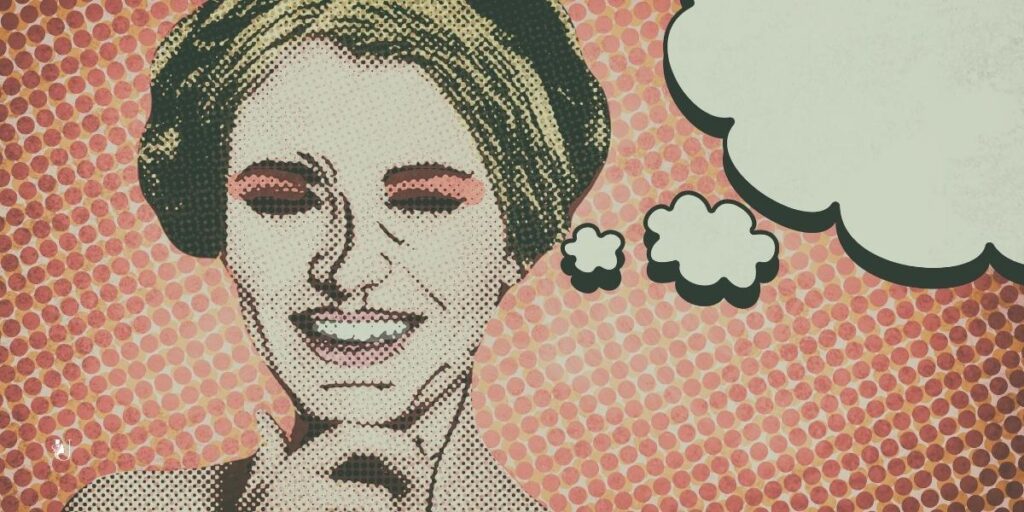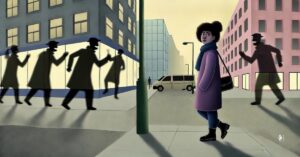Recently, during an online discussion, I said that women are not interlopers or invaders in geek spaces – we have always been there. One response was, “Then why don’t women come to comic shops?“
My immediate reaction to that question was to think of the 12 long boxes of comics my husband and I share, the vintage comics I hunted all over the state (and the internet) for, and my shelves of graphic novels. The only answer I provided then was, “We do.“
But I think there’s more to that question that needs to be unpacked: assumptions about what goes on in geek spaces, who is welcome, and where the women are.
Also Read
Solipsism
Inherent in the question, “Why don’t women come to comic shops,” when asked of a woman who definitely does go to comic shops, is a particular form of solipsism that occurs when women (and anyone who’s marginalized) talk about our experiences in a dominant setting.

Rephrased, the question is a statement: “I don’t see this occur. Therefore, it cannot occur, regardless of what you’re saying about your experience.“
Another implicit question is, “You say women have been in geek spaces, but I don’t see women in the geek spaces I inhabit. So where are they?“
Geek Gatekeepers
I went to a comic shop as an undergraduate student. I tried a few times. My friends were reintroducing me to comics as a medium I might enjoy after years of male nerds shutting me out and reinforcing the concept of comics as a “No Girls Allowed” sort of space.
Unfortunately, the comic shops I tried also reinforced that attitude – women who went in were leered at by staff and other customers or quizzed on obscure trivia to force us to “prove” to them that we belonged.
Both of those behaviors are gatekeeping behaviors, and both of them serve to keep women out of comic book shops and other nerdy activities we otherwise enjoy. Young women and girls already tend to feel alienated from comic spaces by virtue of the over-representation of male characters (young readers of color are further alienated by the dominance of white protagonists of any gender) and by attitudes that keep girls from feeling welcome in the first place. When we try again as adults and are greeted with sexual objectification or aggressive quizzes on knowledge, we are shut out of learning; we’re alienated all over again.
Gatekeepers create a self-fulfilling prophecy: Girls can’t be nerds because comics are for boys, and, as adults, women don’t read comics because they never come into the comic shops I frequent. Even women who would pass the quizzes are made to feel inadequate – they’re reading the wrong comics, valuing the wrong aspects, and not engaging with comics in exactly the way the gatekeepers are, which is the only right way.
One woman I knew would go into comic shops and loudly proclaim her complete ignorance of comics to head off such questions, even as she darted around the store to grab the latest issues of everything she read.
The Comic Shop Environment
When my now-husband and I first started dating, I had given up on going to comic shops. Everything I wanted to read, I would order online or not read at all. While to some, this may seem like confirmation of the idea that women don’t go to comic shops, keep in mind that I had gone – I merely stopped going for a while because it was a consistently negative experience.
Many other women stick it out and go despite the atmosphere or find bookstores that sell comics (and, as I will discuss at the end, the comic shop landscape is finally, slowly, changing).
However, my current experience with comic shops is not all that different from what it was earlier in my life. The closest comic shops are a 45-minute drive on the highway; when my husband and I go, we go to two or three different places to find everything we want. Our main pull list is at one central shop, and that is the one I want to focus on here.
For men who wonder why they never see women at the comic shops they visit, think about the experiences I am describing and consider that it’s not that women don’t go to comic shops at all but that we are selective about which ones we patronize.
In my case, my options are to have the following experiences or only shop online, where my selection is likely to be reduced.
The shop where we have our pull list also sells action figures, statues, and posters, many of which are displayed on the walls around the store. These include a non-trivial percentage of cheesecake, all of which is of women. The statues sold include a variety of naked or undressing women, with a handful on display in the floor-level glass counter by the register (a couple of them have their nipples covered with price stickers, as though that helps somehow).
The store has a partially walled off “adults only” section, stocked with nothing but pornography that is intended to cater to a presumed straight male audience (lots of “3D boob” books, books that are nothing but disembodied images of women’s legs, breasts, or feet, and the like).
None of the above is inherently bad – I have no problem with porn or cheesecake.
The issue, however, is what the relentless focus on a narrow audience (straight men) tells me about my likely reception in the store. Women in that environment are presented as objects to be ogled, no matter where I walk. Outside the explicit porn section, almost equally-explicit images of Dawn, Lady Death, and others cover much of the available wall space.
Male superheroes are shown in active roles – Spider-Man swinging between two buildings, the X-Men gearing up for battle, Batman punching Joker, etc.; the women are posed, gazing at the viewer, and on display.
There’s no Dick Grayson lounging around or peeking over his shoulder with a wink for his adoring female audience, for example. There is not a single scrap of art or adult material aimed at women (or, from what I can tell, queer audiences).
In addition to an environment that tells women our role there is to be stared at, women in the store actually do end up getting stared at by other customers and, often, the staff. While the relentless quizzing does not occur when I am there with my husband, other patrons of the store have no qualms about staring at me or following me around. This experience is common to all of the comic shops my husband and I go to.
Often, when we split up to look for different things, I will be approached or hit on by other customers. While not the same type of gatekeeping as aggressively quizzing me when I walk in the door, this behavior still tells women that we are seen as outsiders and that we are there for men’s benefit, not as customers and fans ourselves.
I do not see many other women at that particular comic book store, and I would be confident in saying that the atmosphere and reaction of other patrons to women is a big part of the reason why – if I had other, friendlier options, I’d be there in a heartbeat. We were there recently when a man came in with 3 pre-teen girls looking for Squirrel Girl and Wonder Woman comics – they were the first girls I’d ever seen in that store, and I’ve now been going there for over 2 years.
It was uplifting to see their enthusiasm and excitement and disheartening to see them in an environment that does not promote or support their presence and interests. Comic book shops can do much better at being welcoming spaces for all readers.
Diversity in Comic Shops
When I shared some of these experiences on Twitter, I was met with an outpouring of, “Me too! Here was what happened…” and men and women alike described witnessing or going through similar things. Person after person described being quizzed, harassed, ogled, or hit on while trying to buy comics.
Many of them said they still go to that shop because it’s the only one they have; many said they’ve given up entirely and shop elsewhere or only online.
The other major response I got when discussing this, however, was, “Everything is different at this shop I visit – women work there!“
People described the welcoming environments they shop in, the excellent recommendations they get, and their comfort at being able to buy comics in a place where they are represented.
This is a major change for many people, who described finding a location with a more diverse staff and not wanting to shop anywhere else, even when they had once been gatekeepers themselves. People felt safe shopping in those stores.
This is why diversity matters to marginalized geeks. Simply seeing someone who looks like you behind the counter provides information about who is welcome in the store and what kinds of attitudes you are likely to encounter.
The LCS Valkyries are an excellent example of this, placing an emphasis on celebrating and building communities around women who work in comic shops. Additionally, lists of female-friendly comic shops are available, providing ways for women to seek out safer spaces in which to shop.
Where are All the Women?
Let’s return to the original question I was asked and its assumptions.
“Why don’t women come to comic shops?” is the wrong question and rests on the wrong beliefs about women in nerd spaces.
Women do come to comic shops, but when we arrive, we often find that the door has been slammed in our faces by a combination of hostility and objectification. At that point, we’re probably going to look for another place to call home.
Women are everywhere in geekdom – if you don’t see anywhere you are, the question isn’t whether women are really geeks. Instead, it’s time to look at the space you’re in and think about whether or not it’s welcoming.













